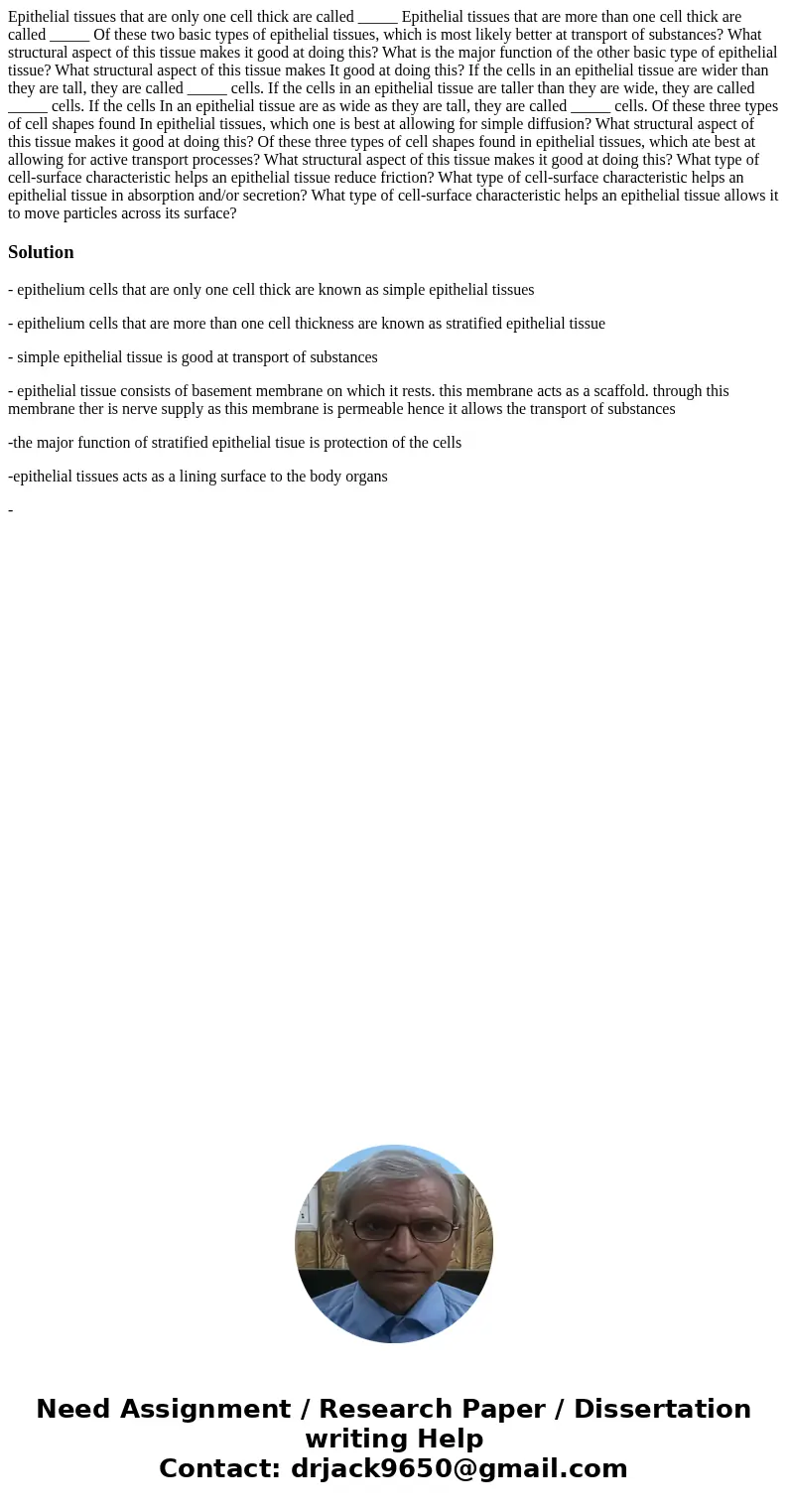Epithelial tissues that are only one cell thick are called
Epithelial tissues that are only one cell thick are called _____ Epithelial tissues that are more than one cell thick are called _____ Of these two basic types of epithelial tissues, which is most likely better at transport of substances? What structural aspect of this tissue makes it good at doing this? What is the major function of the other basic type of epithelial tissue? What structural aspect of this tissue makes It good at doing this? If the cells in an epithelial tissue are wider than they are tall, they are called _____ cells. If the cells in an epithelial tissue are taller than they are wide, they are called _____ cells. If the cells In an epithelial tissue are as wide as they are tall, they are called _____ cells. Of these three types of cell shapes found In epithelial tissues, which one is best at allowing for simple diffusion? What structural aspect of this tissue makes it good at doing this? Of these three types of cell shapes found in epithelial tissues, which ate best at allowing for active transport processes? What structural aspect of this tissue makes it good at doing this? What type of cell-surface characteristic helps an epithelial tissue reduce friction? What type of cell-surface characteristic helps an epithelial tissue in absorption and/or secretion? What type of cell-surface characteristic helps an epithelial tissue allows it to move particles across its surface?
Solution
- epithelium cells that are only one cell thick are known as simple epithelial tissues
- epithelium cells that are more than one cell thickness are known as stratified epithelial tissue
- simple epithelial tissue is good at transport of substances
- epithelial tissue consists of basement membrane on which it rests. this membrane acts as a scaffold. through this membrane ther is nerve supply as this membrane is permeable hence it allows the transport of substances
-the major function of stratified epithelial tisue is protection of the cells
-epithelial tissues acts as a lining surface to the body organs
-

 Homework Sourse
Homework Sourse